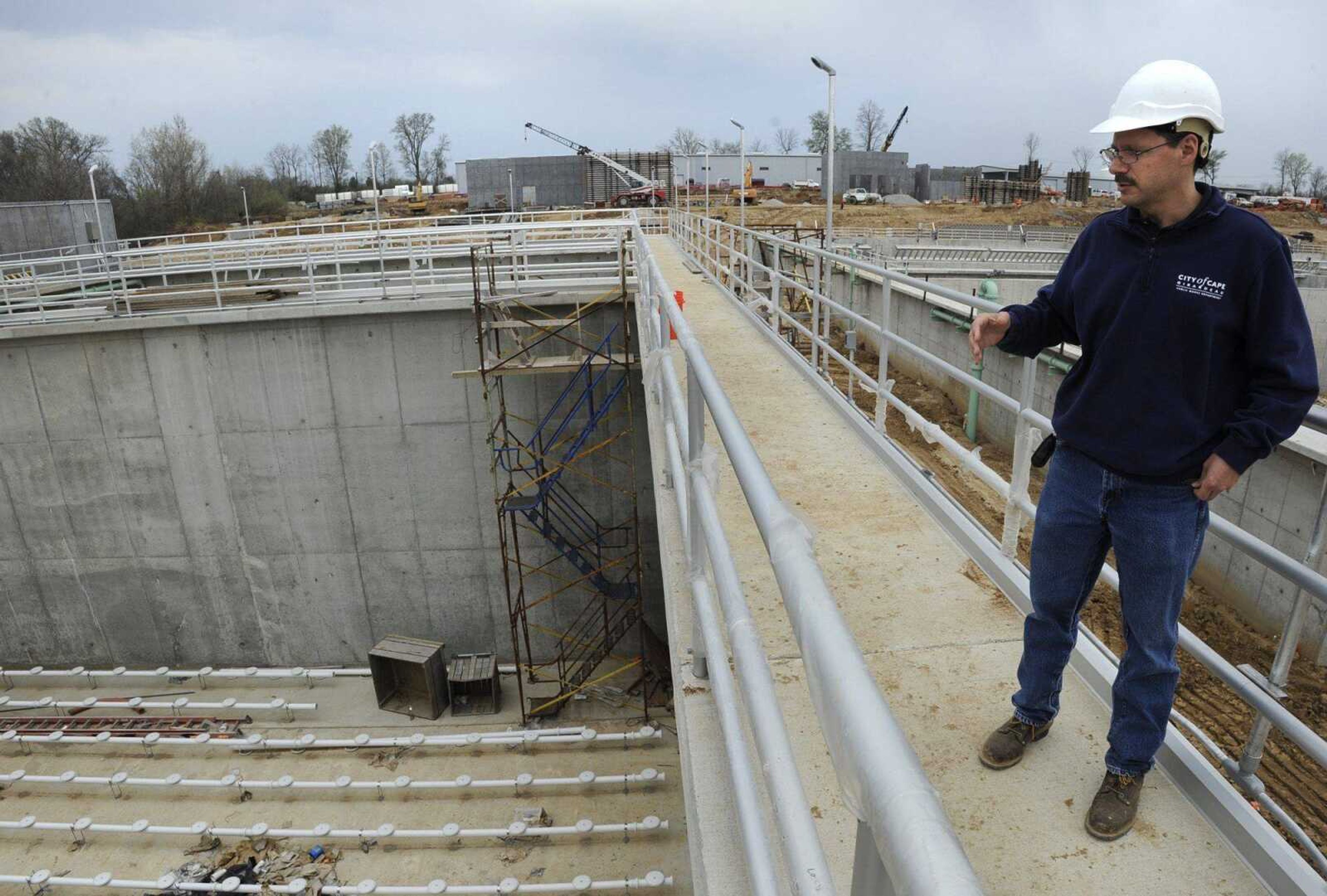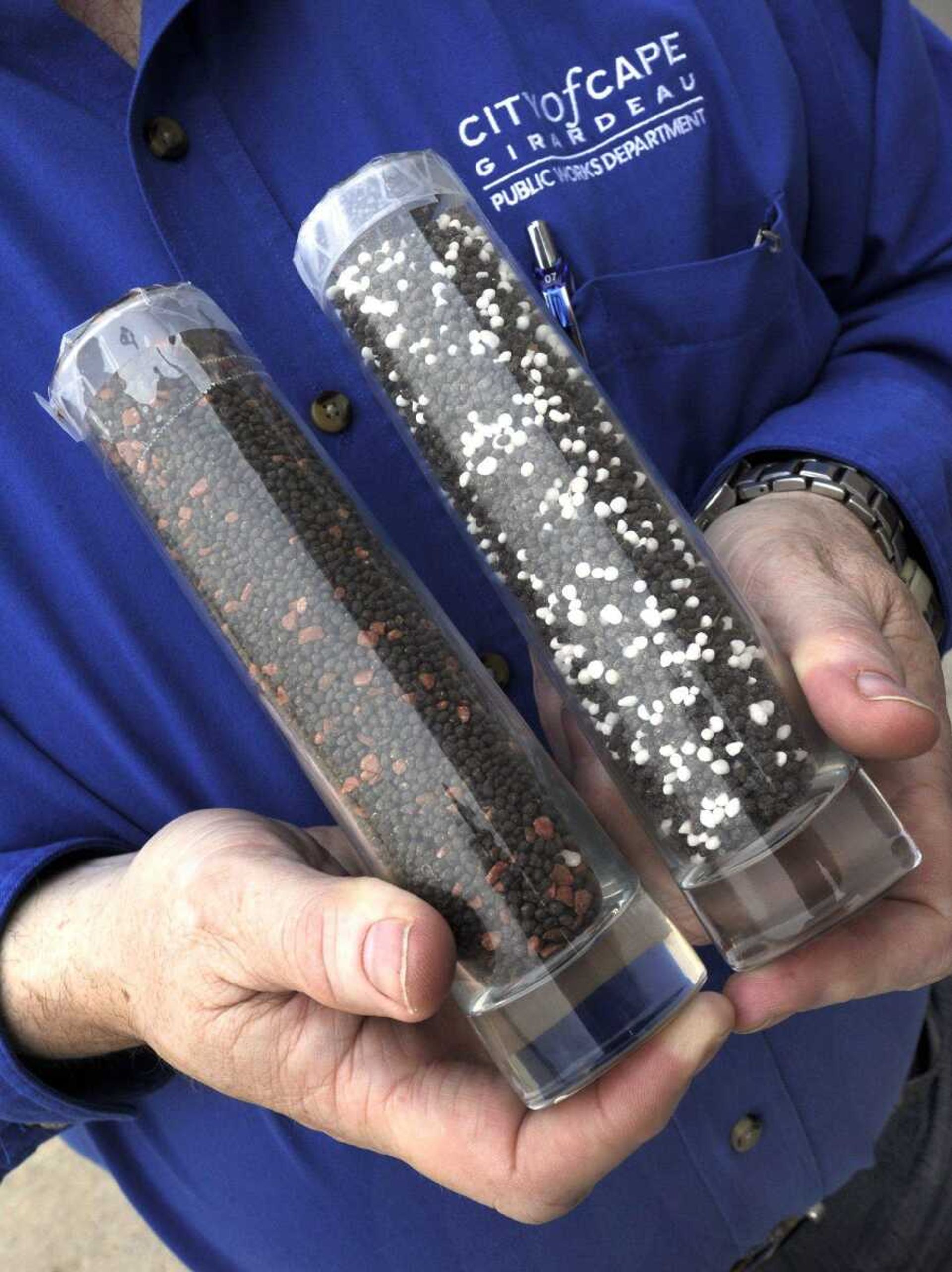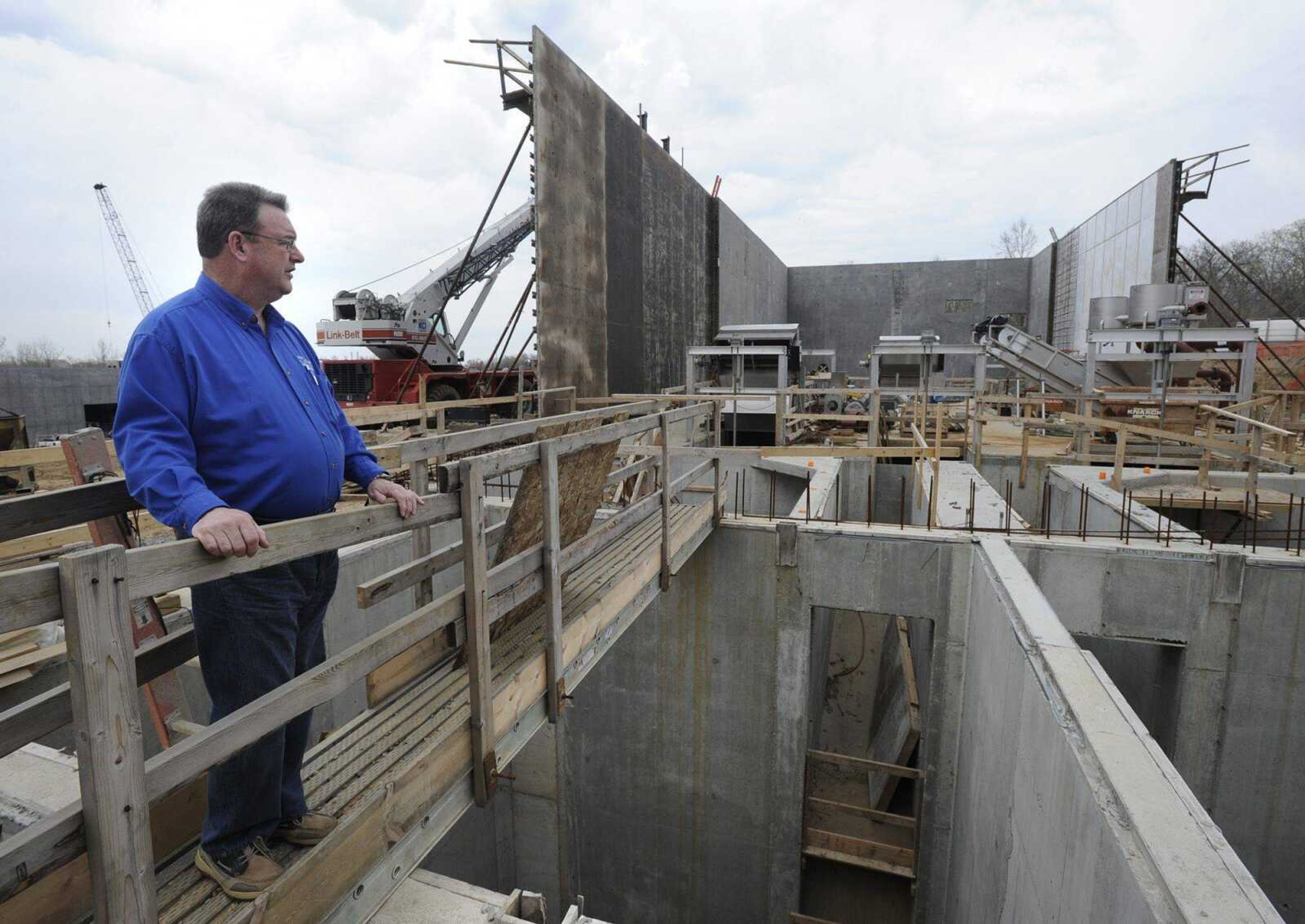It's difficult to imagine the site of Cape Girardeau's new wastewater treatment facility was no more than a grassy field just a few years ago.
Five new structures, each housing a different step in the treatment process, are spread across the area, sprinkled with construction equipment as crews work to complete the largest capital improvement project in the city's history.
The $55 million plant is partially funded through a 2011 voter-approved increase in water and sewer fees.
The 12-acre property on Corporate Circle was bought by the city many years ago when the public works facility still was on North Kingshighway, initially to be the location for the department's new home.
The city instead placed the department a few yards away in the 94,000-square-foot building at 2007 Southern Expressway, which already met all its needs and required little construction. There was talk of selling the property on Corporate Circle after the department's relocation, but public works director Tim Gramling said it's fortunate the city decided to keep the property.
"When we bought the land for a future public works station, little did we know it would be the perfect location for our wastewater treatment facility," he said.
Besides proximity to the public works station, the land has a downward slope that allows all the initially collected wastewater to rely on gravity to flow to the next treatment structure, rather than using a complicated piping system.
The structures
The new facility features four treatment structures and an administration building.
Treatment labs, a control center and a few offices will be in the administration building. The facility also will feature a presentation and conference room that will host tour groups and provide space for training facility operators in Cape Girardeau and surrounding areas.

The first stop for wastewater entering the new system is the headworks station. There, raw sewage is pumped through screens and other mechanisms to remove trash, grit and large solids.
"It's one of the most efficient grit removal systems available right now," said Todd Fulton, wastewater treatment coordinator.
The mechanical and biological treatments take place in the sequencing batch reactor, a large concrete structure with four open basins. Each basin features "fine bubble diffusers" -- small disks near the bottom with tiny holes that push air through the water. Adding air to the water is part of the biological treatment.
It's a space-saving design that's much more efficient than the trickle filter of the existing plant, Gramling said. The system also is better equipped to handle heavy precipitation.
"Even when it's inundated by rain, [the water] still meets standards," said Gramling.
The sequencing batch reactor is only the second of its kind in Missouri because of its "continuous flow" feature. Many wastewater facilities include a sequencing batch reactor, but each basin fills one at a time to go through the treatment process. With the continuous flow system, all four basins will be filled at once.

The "sludge" and fine sediment processed out of the water at the sequencing batch reactor goes to the biosolids station, where the water is removed through a drying process. It's used to create tiny pellets, which can be sold as fertilizer for fields, gardens or landscaping. Gramling said the profits made from fertilizer sales will be minimal, but will help offset some of its energy costs.
At the current facility, the sludge remains in a liquid form and is taken to landfills or distributed only on certain fields because it's considered a class B contaminant and not safe to be spread on food crops or in public areas.
The final step for water treatment, before it enters the pipe that will take it to the Mississippi River, is ultraviolet disinfection. This step is a new requirement mandated by the Missouri Department of Natural Resources.
"So even if we didn't need to build a new facility, we still would have had to implement something like this for the old station," Gramling said.
He said the city built the new facility to allow flexibility, knowing that DNR regulations will change in the future.
The property on which the facility sits allows room for expansion if it needs to be updated, or if the city grows beyond its capacity.
"The city can grow significantly over time before it reaches capacity," said Gramling. "We're planning well, well into the future."
Better features
The updated treatment facility comes with a number of improvements. For starters, the system is automated, which means a person's constant physical presence isn't required. If something malfunctions, the monitoring system can send a warning to the computer system or to cellphones.
The facility also has backup generators so it can continue operating even if the city loses power.
But Gramling said the new system will not have one feature the current system has: the smell. Each structure built as part of the new facility has odor control. The smell will be confined to just the indoor area in some cases, but even open structures won't produce the pungent odor associated with the existing plant.
"You almost need to walk right up to it to notice the smell [of the open basins]," he said. "Even then, it's more of an earthy smell compared to the rotten egg smell of the old facility."
The reason for the odor improvement is partly because of the bubble diffusers used to help treat the water. The existing facility uses a sulfur-based treatment, which causes the rotten-egg smell.
The water won't just smell better as it's being treated; it also comes out cleaner. The water treated at the new plant will be 50 percent to 70 percent cleaner compared to water treated at the existing one, according to estimates from Gramling and Fulton.
Gramling said persistent winter weather pushed back the facility's completion date, initially was set for this summer.
"It was a tough winter," he said. "The ground would freeze and thaw, and it would be a muddy mess. You would be up to your knees [in mud]."
The facility is expected to be complete and operating by September or October.
srinehart@semissourian.com
388-3641
Pertinent address:
2007 Southern Expressway, Cape Girardeau, Mo.
Connect with the Southeast Missourian Newsroom:
For corrections to this story or other insights for the editor, click here. To submit a letter to the editor, click here. To learn about the Southeast Missourian’s AI Policy, click here.







